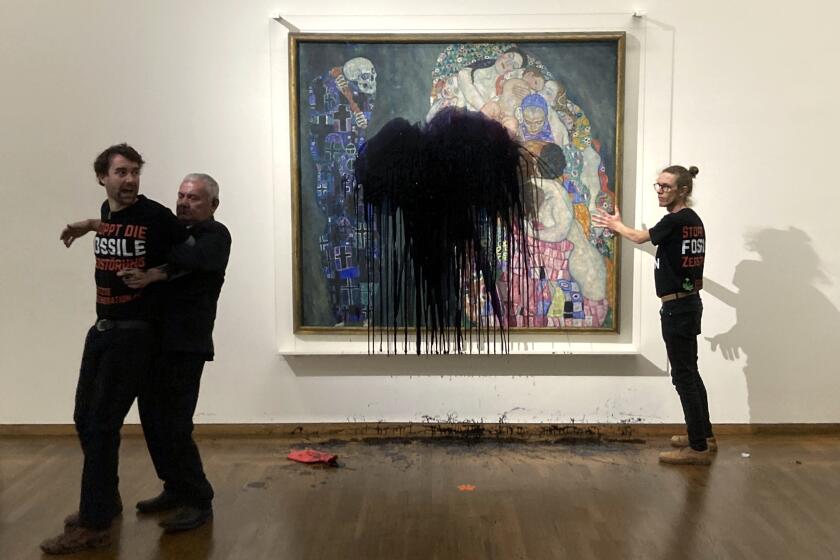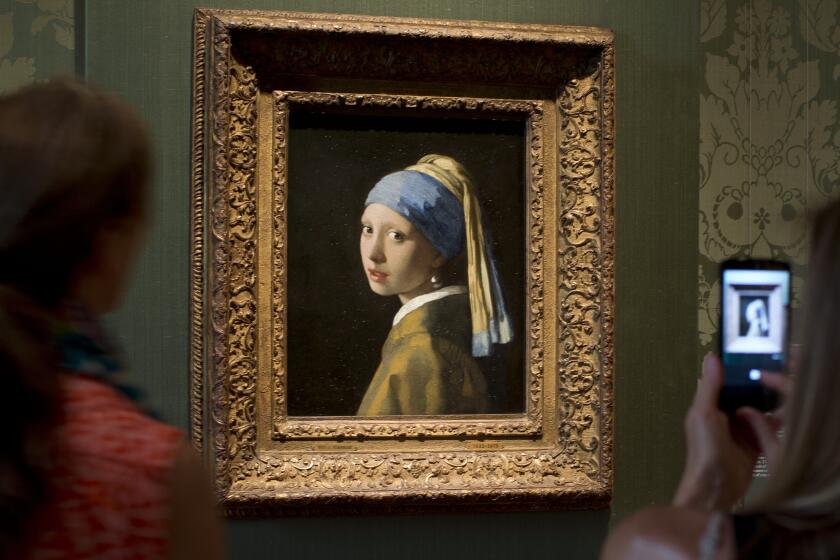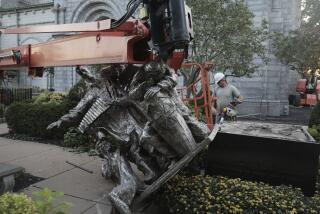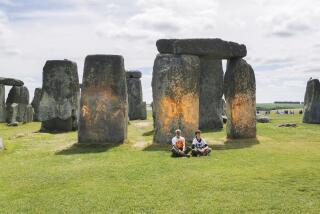Vatican court convicts climate activists for damaging statue
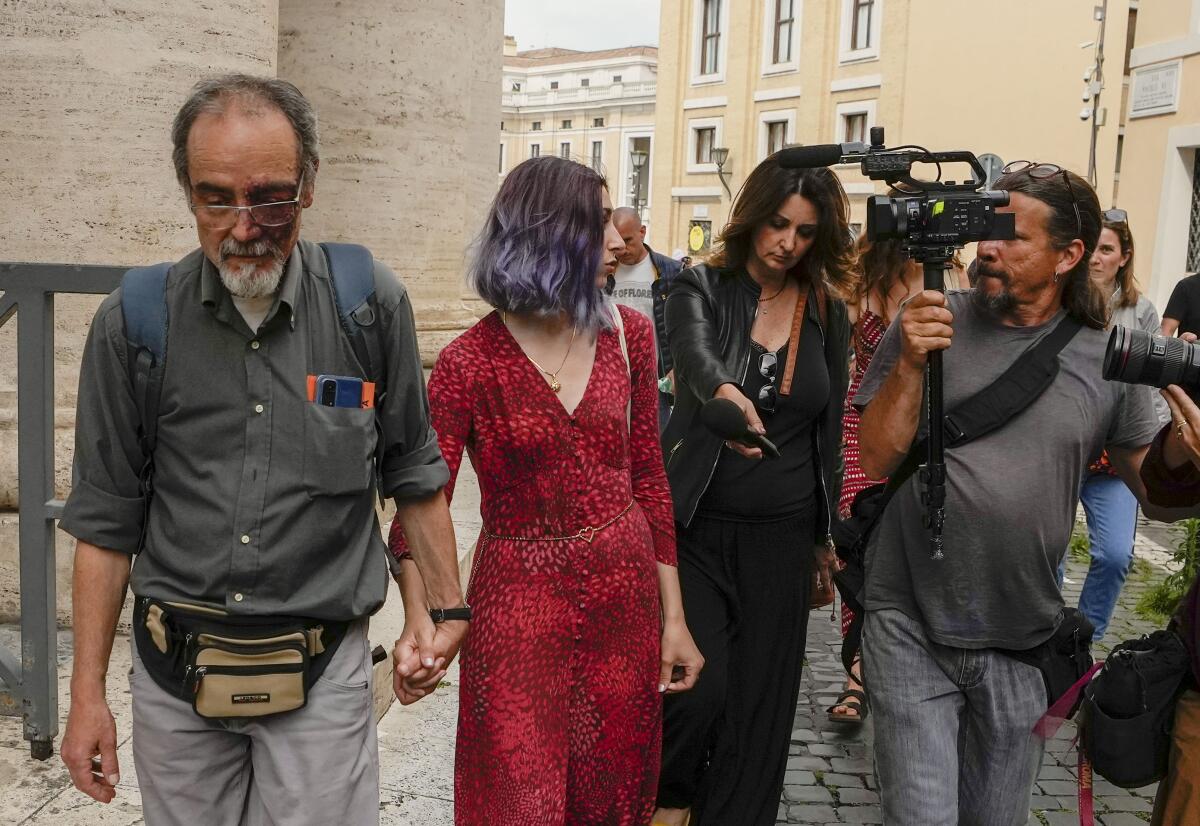
- Share via
VATICAN CITY — A Vatican court convicted two environmental activists of aggravated damage Monday and ordered them to pay more than 28,000 euros ($30,000) in restitution after they glued their hands to the base of an ancient statue in the Vatican Museums in a protest to draw attention to climate change.
The two members of the Last Generation environmental activist group, Guido Viero and Ester Goffi, also received a nine-month suspended sentence and were fined 1,620 euros apiece. A third activist on trial with them, Laura Zorzini, was fined 120 euros.
The trial stemmed from an Aug. 18 protest in the Vatican Museums, during which Viero and Goffi glued their hands to the base of the Laocoon statue, one of the most important ancient works in the collection that is believed to date from the 1st century B.C. They hung up a banner reading “Last Generation: No gas and no carbon,” as Zorzini filmed them.
Their action was part of a wave of Last Generation and related activist protests around Europe that have targeted museums and other cultural institutions, tied up traffic for days and otherwise caused disruptions in a bid to draw attention to what the activists say is the failure of governments to take action to fight climate change.
Climate activists in Austria threw black, oily liquid at a Gustav Klimt painting and one then glued himself to glass protecting the artwork.
In closing arguments, the lawyer for the Vatican City State accused the defendants of exploiting Pope Francis’ known concern for the environmental cause by causing “inestimable” damage to a piece of the world’s artistic and cultural patrimony.
Attorney Floriana Gigli said Viero and Goffi knew their protest would damage the artwork, citing their decision to glue their hands to the base, not the statue itself, and yet never expressed regret at the damage caused.
None of the defendants was in the Vatican criminal tribunal for the verdicts.
During the previous hearing May 24, Viero and Goffi told the court they never intended to damage the statue, but also strongly defended their cause. Viero told the court he felt an obligation as a father and grandfather to draw attention to Italy’s failure to halt global warming. Goffi, for her part, recalled she had brought a glue solvent in her purse, but Vatican restorers used a different acetone-based substance to unglue their hands.
Climate activists targeted Johannes Vermeer’s masterpiece with glue and liquid. The painting was not damaged, said officials at Mauritshuis museum in The Hague.
Vatican Prosecutor Catia Summaria had asked for a sentences of two years and a fine of 3,000 euros apiece for Viero and Goffi and a sentence of one month for Zorzini. But she said if the court decided on suspended sentences, the defendants should be ordered to repay the full cost of the damage to the statue.
Gigli said the actual cost was impossible to estimate given the statue is a priceless artwork and is permanently damaged. She asked the court for an appraisal to come up with a figure, saying the restoration work alone had cost 3,148 euros.
In the end, the court declared the restitution owed to the Vatican City State at 28,148 euros. There was no immediate word on an appeal.
During the last hearing, the head of the Vatican Museums’ marble restoration laboratory, Guy Devreux, said the damage to the base was ultimately less than he had anticipated but was nevertheless permanent. He stressed that the marble base of the statute was “absolutely” to be considered an “integral part of the work.”
Last Generation has said it targeted the Laocoon statue, which is believed to have been carved in Rhodes in 40-30 B.C., because of the symbolic story behind it. According to legend and the Vatican Museums’ own website, Laocoon warned his fellow Trojans against accepting the wooden horse left by the Greeks during the Trojan War. The group said the climate crisis is the modern-day warning that is being unheeded by political leaders.
More to Read
Sign up for Essential California
The most important California stories and recommendations in your inbox every morning.
You may occasionally receive promotional content from the Los Angeles Times.
